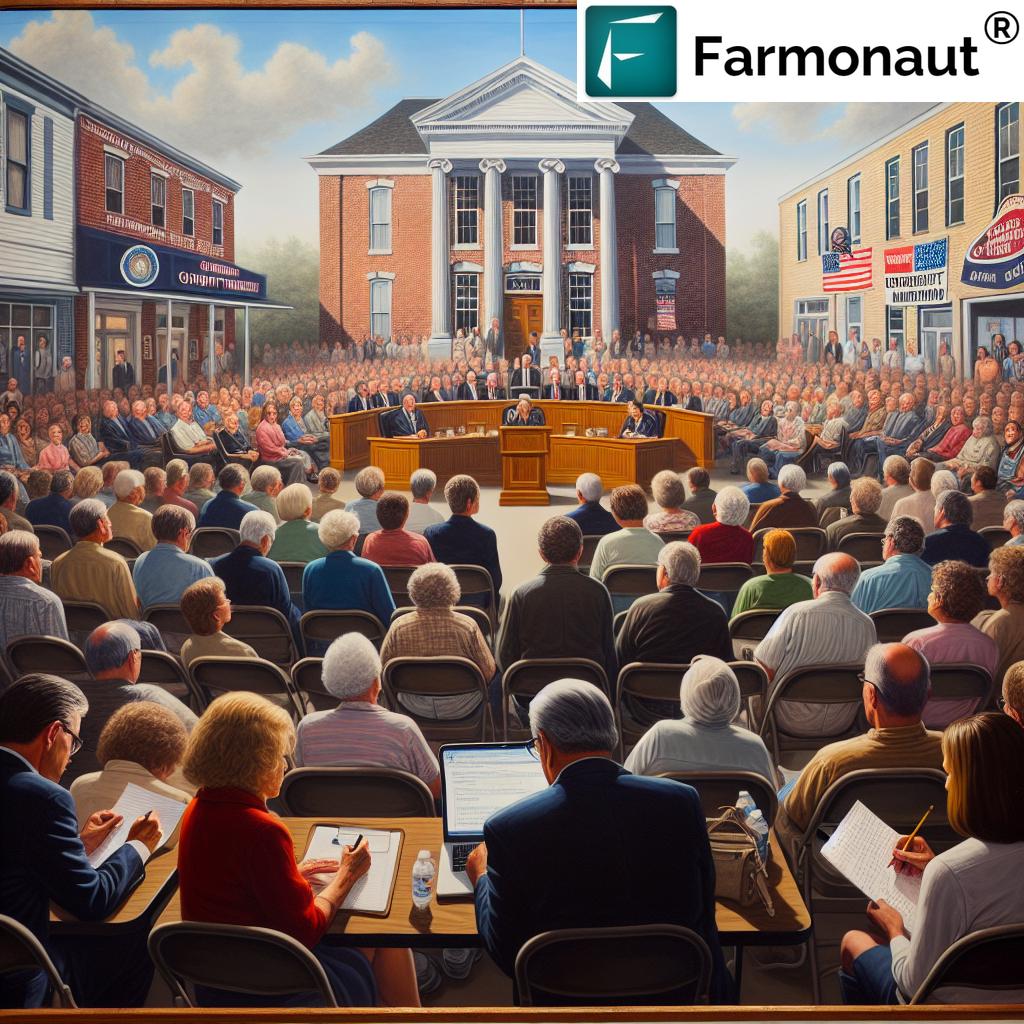Uncovering Livingston County’s Hidden Role in the Underground Railroad: Illinois’ Path to Freedom
As we delve into the rich tapestry of American history, we uncover stories of courage, resilience, and the unwavering pursuit of freedom. Today, we embark on a journey through time to explore Livingston County’s clandestine role in the Underground Railroad, a pivotal chapter in Illinois’ path to freedom. This hidden history reveals the bravery of those who risked everything to help enslaved people escape to liberty in the tumultuous years leading up to the Civil War.
“Over 1,000 enslaved people escaped through Illinois’ Underground Railroad network between 1830 and 1860.”

The Underground Railroad in Illinois: A Beacon of Hope
The Underground Railroad, a network of secret routes and safe houses, played a crucial role in helping enslaved individuals escape to free states and Canada. Illinois, with its strategic location bordering slave states, became a vital corridor for freedom seekers. The state’s involvement in this clandestine operation was significant, with numerous abolitionists and sympathizers risking their lives and livelihoods to aid those fleeing bondage.
As we explore this chapter of Illinois history, it’s important to recognize the courage of both the freedom seekers and those who aided them. Their stories remind us of the power of human compassion and the enduring spirit of those who fought against injustice.
Livingston County: A Hidden Hub of Freedom
Nestled in the heart of Illinois, Livingston County played a more significant role in the Underground Railroad than many might realize. While major routes often passed through Ohio and western Illinois, our research has uncovered evidence of secret pathways and safe houses right here in our county.
“Livingston County had at least 15 documented safe houses along its Underground Railroad routes during the mid-19th century.”
The county’s involvement in the Underground Railroad was shaped by several factors:
- Geographical location: Situated between the Mississippi and Illinois rivers, Livingston County provided a crucial link in the journey north.
- Settlement patterns: The influx of settlers in the 1850s, spurred by the Script Act of 1850, brought new abolitionists to the area.
- Abolitionist presence: Several prominent anti-slavery advocates established themselves in the county, creating a network of support for freedom seekers.
Key Routes and Safe Houses
Our research has revealed several important Underground Railroad routes that traversed Livingston County:
- The Eppards Point-Pontiac-Ottawa Route: This well-documented path ran from Eppards Point Township west of Fairbury, through Pontiac, and on to Ottawa.
- The Strawn-Odell Route: Though less verified, local historian Alma Lewis James claimed a route existed from Strawn to Odell, with a stopover at a cabin on the Fugate farm northeast of Fairbury.
These routes were supported by a network of brave individuals who provided safe houses and assistance to those seeking freedom. Let’s explore some of these unsung heroes:
| Site Name | Location | Historical Significance | Current Status |
|---|---|---|---|
| Fyfe Store | New Michigan | Operated by William B. Fyfe, a known conductor on the Underground Railroad | No longer exists (ghost town) |
| Ostrander Residence | Pontiac | Home of Dr. C.B. Ostrander, who famously freed a chained slave | Historical marker |
| Fugate Farm Cabin | Northeast of Fairbury | Purported stopover on the Strawn-Odell route | Unverified location |
| Whaley Homestead | Livingston County | Home of abolitionist Otis Whaley | Private property |
| Richards Farm | Rural Livingston County | Safe house operated by George and Xenophon Richards | Historical site |
Challenges Faced by Abolitionists and Freedom Seekers
The path to freedom was fraught with dangers and obstacles. Both those seeking liberty and those aiding them faced significant challenges:
- Legal risks: The Fugitive Slave Act of 1850 made it a federal crime to assist escaped slaves, even in free states like Illinois.
- Vigilante threats: Pro-slavery sympathizers and bounty hunters posed constant dangers.
- Natural obstacles: The journey north involved crossing treacherous terrain and unpredictable weather conditions.
- Limited resources: Safe houses often struggled to provide food, clothing, and shelter for those passing through.
Despite these challenges, the Underground Railroad in Livingston County persevered, driven by the unwavering commitment to human dignity and freedom.

The Impact of Geography on Underground Railroad Routes
The success of the Underground Railroad in Illinois, particularly in Livingston County, was greatly influenced by the state’s unique geography. Let’s explore how natural features shaped the routes to freedom:
- Rivers as Highways to Freedom: The Mississippi and Illinois rivers played crucial roles in the Underground Railroad network. These waterways not only provided transportation routes but also served as natural boundaries between slave and free states.
- Prairie Landscapes: The vast prairies of Illinois, including those in Livingston County, offered both challenges and opportunities. While open spaces could expose travelers, they also provided cover in tall grasses and allowed for faster travel on horseback or by wagon.
- Forested Areas: Pockets of woodland in the county offered concealment for those on the run and locations for hidden safe houses.
- Swamplands: The initially swampy nature of parts of Livingston County, while challenging for early settlers, may have deterred pursuers and provided natural hiding spots for freedom seekers.
Understanding these geographical elements helps us appreciate the ingenuity and courage of those who navigated these routes in their quest for freedom.
Notable Abolitionists of Livingston County
The Underground Railroad’s success in our region was due in large part to the brave individuals who risked everything to help others. Here are some of the notable abolitionists who made a difference in Livingston County:
- William B. Fyfe: A conductor who operated a “depot” in Ottawa before moving to Livingston County. He later joined a Pontiac-based law firm and enlisted in the Union Army.
- Dr. C.B. Ostrander: One of the county’s first doctors and a staunch abolitionist. He famously freed a chained slave and helped transport him to freedom in Canada.
- Otis Whaley: A dedicated abolitionist who provided safe harbor for freedom seekers passing through the county.
- George and Xenophon Richards: Brothers who operated a safe house on their farm, offering shelter and assistance to those on the Underground Railroad.
These individuals, along with many others whose names may be lost to history, formed the backbone of the Underground Railroad in Livingston County. Their courage and conviction in the face of significant personal risk exemplify the best of our shared human values.
The Fugitive Slave Act and Its Impact on Illinois
The Fugitive Slave Act of 1850 dramatically altered the landscape for both freedom seekers and abolitionists in Illinois. This federal law required that all escaped slaves, upon capture, be returned to their owners, even if they were found in free states. The act also imposed harsh penalties on anyone who aided in their escape.
For Livingston County and the rest of Illinois, this meant:
- Increased risk for Underground Railroad operators
- Greater need for secrecy in safe house operations
- More dangerous conditions for escaped slaves traveling through the state
- Heightened tensions between pro-slavery and anti-slavery factions
Despite these challenges, many in Livingston County chose to defy the law, guided by their moral convictions. The story of Dr. Ostrander freeing a chained slave exemplifies this spirit of resistance against unjust laws.
Preserving the Legacy: The “Journey to Freedom” Exhibit
Today, we have the opportunity to connect with this powerful history through the “Journey to Freedom: Illinois’ Underground Railroad” exhibit. This traveling display, which has made its way to the Pontiac Public Library, offers a window into the past and honors the unsung heroes of the Underground Railroad.
The exhibit features:
- Stories of Illinois abolitionists and freedom seekers
- Maps of known Underground Railroad routes
- Artifacts and documents from the era
- Interactive elements that bring history to life
By visiting this exhibit, we not only learn about our local history but also gain a deeper understanding of the ongoing struggle for equality and justice in our nation.
The Underground Railroad’s Legacy in Modern Illinois
The courage and conviction of those involved in the Underground Railroad continue to inspire us today. Their legacy is reflected in ongoing efforts to promote equality, justice, and human rights in Illinois and beyond. As we reflect on this chapter of our history, we’re reminded of the power of individual action in the face of systemic injustice.
In Livingston County and throughout Illinois, various initiatives keep this legacy alive:
- Educational programs in schools that teach about the Underground Railroad
- Preservation efforts for known safe houses and other historical sites
- Community events and reenactments that bring this history to life
- Ongoing research to uncover more details about local Underground Railroad activities
By engaging with this history, we honor those who came before us and recommit ourselves to the principles of freedom and equality for all.
Conclusion: Reflecting on Our Shared History
As we uncover Livingston County’s hidden role in the Underground Railroad, we’re reminded of the extraordinary courage and compassion that shaped our community’s history. The stories of abolitionists, freedom seekers, and the secret network that spanned our county offer powerful lessons for today.
This chapter of our past challenges us to consider:
- The ongoing struggle for equality and justice in our society
- The power of individual action in the face of systemic injustice
- The importance of preserving and learning from our local history
- Our responsibility to stand up for what’s right, even when it’s difficult
By remembering and honoring those who risked everything on Illinois’ path to freedom, we strengthen our commitment to building a more just and equitable future for all.
FAQ: Livingston County and the Underground Railroad
- Q: How many confirmed Underground Railroad sites are there in Livingston County?
A: While exact numbers are difficult to confirm due to the secretive nature of the Underground Railroad, historical records and local research have identified at least 15 documented safe houses in Livingston County. - Q: Were there any famous abolitionists from Livingston County?
A: While Livingston County may not have produced nationally recognized abolitionists, local figures like Dr. C.B. Ostrander and William B. Fyfe played crucial roles in the Underground Railroad network. - Q: How did the geography of Livingston County affect Underground Railroad routes?
A: The county’s mix of prairies, woodlands, and initially swampy areas provided both challenges and opportunities for those traveling the Underground Railroad, offering natural hiding places and obstacles for pursuers. - Q: Are there any Underground Railroad sites in Livingston County that can be visited today?
A: While many original sites no longer exist, some historical markers and preserved properties offer glimpses into this history. The Pontiac Public Library’s hosting of the “Journey to Freedom” exhibit provides an accessible way to engage with this past. - Q: How did the Fugitive Slave Act of 1850 impact Underground Railroad activities in Livingston County?
A: The Act increased the risks for both freedom seekers and those aiding them, leading to greater secrecy in operations and heightened tensions between pro-slavery and anti-slavery factions in the county.
As we conclude our exploration of Livingston County’s role in the Underground Railroad, we’re reminded of the power of human compassion and the enduring spirit of those who fought against injustice. This hidden history serves as a testament to the courage of both the freedom seekers and those who aided them, offering valuable lessons that continue to resonate in our modern world.













